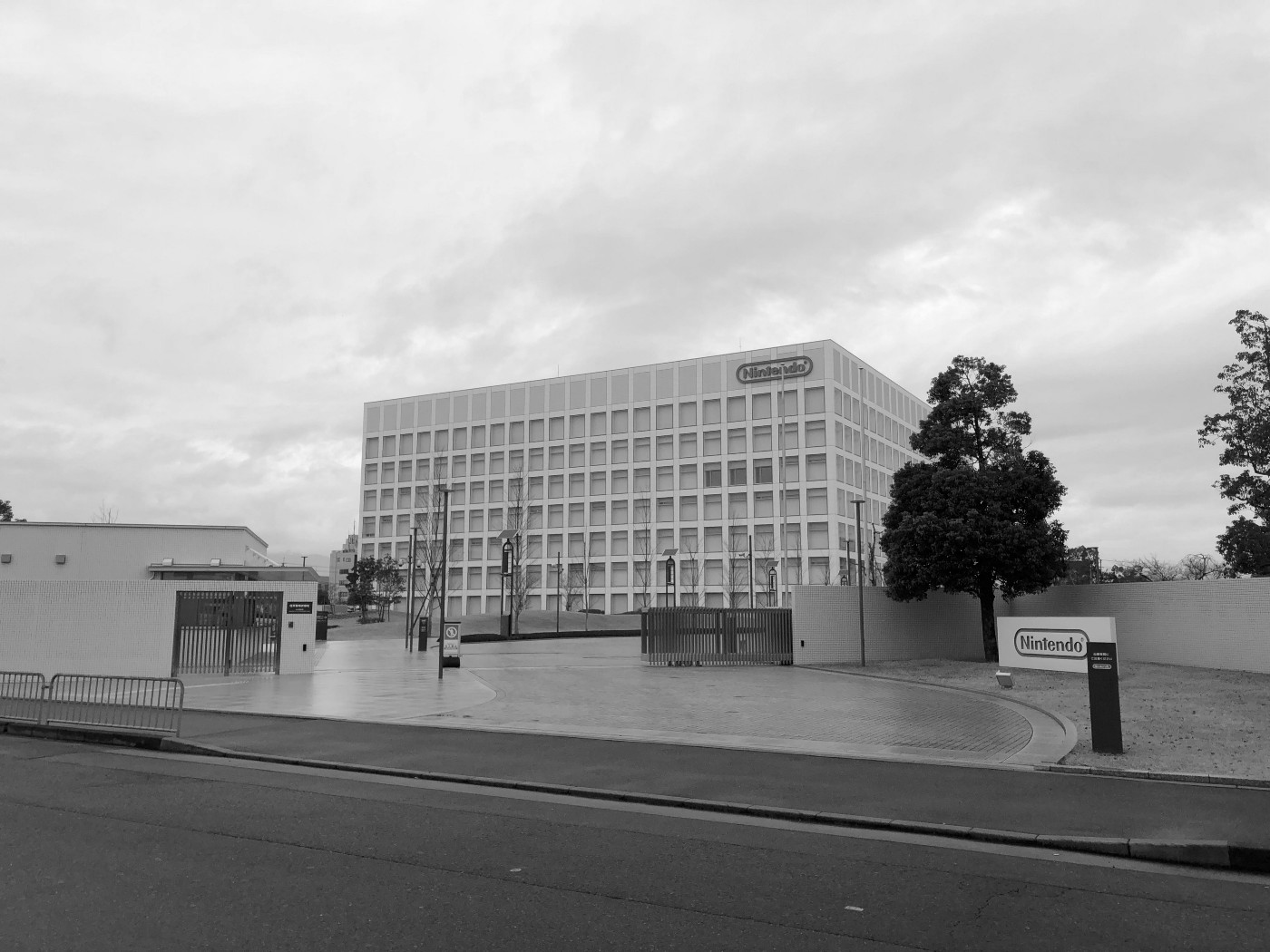How to Visit Nintendo in Kyoto

There are a whole host of great reasons to visit Japan. But it’s definitely true that being a gamer is a bonus; not just because of the plethora of incredible video game stores all around the country (or the arcades, or amusement parks), but because Japan is home to some of the most legendary game companies in the world. For me — and probably for many of you — they don’t come more legendary than Nintendo.
If you’re a Nintendo fan and you’ve never been to Japan, then you’re definitely in for a treat. Though Nintendo is famous all around the world, they are something of a ubiquitous national treasure in Japan. It’s not just that their merchandise can be found everywhere (many large department stores have some kind of dedicated spot for Nintendo-related goodies), but their iconic characters can often be found occupying the role of cultural ambassador; a beaming Mario will greet visitors to Kansai International Airport near Osaka, for example.
Although Nintendo do have an official presence in Tokyo, their global headquarters is in the beautiful historical city of Kyoto. Visitors to Japan should definitely check out Kyoto regardless of Nintendo, due to its stunning temples, castles, gardens, and the world-famous (and breathtaking) Gion district (where, if you’re lucky, you may spot a Geisha dashing to her first appointment at dusk).
Before I continue, it’s worth pointing out something that may or may not be obvious. If you intend to visit Nintendo’s offices in Kyoto, please know that you’ll only be able to view these buildings from the outside unless you have an appointment. There is no official Nintendo museum in Japan, and the company certainly doesn’t offer tours of its facilities. This fact alone might be enough to stop you in your tracks, especially if your time in Japan is limited. But if you’re a die-hard like me, then simply being in the presence of these buildings is worthwhile. I look at it this way: the people who work in these offices are responsible for crafting a significant part of my childhood. The fact that this magazine exists — and that my career path took me into software development — can largely be credited to Nintendo’s influence on my life. If you view Nintendo through that lens, then visiting their offices in Kyoto feels like a pilgrimage more than anything else.
There are really two major sites worth visiting. I’ll start with the major one.
Nintendo HQ & Development Building
The most famous site is definitely the Nintendo headquarters. Be warned in advance that Nintendo is located in a fairly uninteresting district within Kyoto — they are on the eastern side of Minami Ward, which is south of Kyoto Station. So, chances are, you’ll be emerging from the nearby subway station, snapping some photos, then hopping back on the train.
If you are visiting Japan from overseas, you’ll probably want to pick up a Japan Rail Pass before you enter the country. If you want to travel between major cities on the Shinkansen, you’ll need a JR Pass. And most cities have at least some JR lines (where your pass will work without needing to purchase any additional tickets). Having said all of that, the station near Nintendo is part of the Kyoto Subway, which is not part of the JR system. My recommendation is to simply get a Kyoto Subway day pass from any of the train stations in the city — you can get one for ¥600 (which is about $5.50USD). Once you’ve done that, you can jump on the Kintetsu Kyoto Line and get off at Jujo Station (Stop B03).
Once you exit the station, you’re only a block away from Nintendo. As you can see in the map above, Nintendo’s complex utterly dwarfs everything else around it. As you get even remotely close to the area, you’ll see the tops of the two major buildings jutting out conspicuously on the skyline.
There are two main complexes — the southern one is the older building which used acted as Nintendo’s main development centre. Right across the road, on the northern side, is the relatively new Nintendo Development Centre, which houses company’s unified development teams under one roof. The older building is still listed as Nintendo’s official headquarters, where the newer building is apparently where the magic now happens.
Source: Author. Current Nintendo headquarters.
I visited the buildings on a Saturday. The older headquarers building appeared completely dormant with its main gate locked shut. But the Development Centre was open — at least one hapless soul was signing in at the security gate to go to work on the weekend.
I walked around the headquarters building to try to get a better look at the full complex. Most pictures typically just show the main buildings themselves, but it’s worth noting — especially in terms of the headquarters — that we’re really talking about a compound of several buildings, not just the main one. The southern compound houses numerous buildings on the same site, including what looks like a small apartment block that actually sits on Nintendo’s premises.
I assume that this accommodation is for Nintendo employees; it’s quite common for large Japanese companies to house employees right near the office, and I know Nintendo does this, at least in Japan. That said, I don’t know if this building is used for that purpose, or if it’s simply another set of offices.
As I mentioned earlier, the area around Nintendo’s offices is pretty barren. There are some houses and small apartment buildings, as well as several other small businesses and a modest park (which has recently had many of its trees cut down/cut back). Still, if you’re a Nintendo die-hard like me, it’s quite interesting to wander the area. As I was doing so, I was thinking about all of the wonderful experiences I’ve had with Nintendo’s creations over the years — that they originated from such an ordinary place is actually kind of special, I think. This is not Disneyland after all; it’s a place where many creative, hard-working people come together to painstakingly build digital works of art over a long period of time — many years, in several cases.
If you’re still in the mood for more Nintendo trekking after visiting their headquarters, there’s one more place I really recommend checking out. In many ways, it’s even more special.
Old Nintendo Building
If you’re reading this, you probably know that Nintendo was founded way back in 1889 by Fusajiro Yamauchi. The company’s original name was Marufuku Nintendo Card Co, and it produced playing cards known as Hanafuda(traditional Japanese playing cards). Later, after Fusajiro Yamauchi’s grandson — Hiroshi Yamauchi — took over the business, its name changed to Nintendo Karuta Co., Ltd. (and it traded overseas as The Nintendo Playing Card Co. up until 1963, when it took on its current name: Nintendo Co., Ltd.). Not too long ago, an image of the company’s original headquarters popped up online thanks to a local historical project in Kyoto.
Sadly, this particular building no longer exists. It was apparently demolished and replaced by a car park. However, there is a historical site just nearby which is still standing — it’s actually listed on Google Maps as “OLD NINTENDO BUILDING”.
The building is actually just south of the beautiful Gion district. If you feel like walking the banks of the Kamo River, you’ll be able to find it pretty easily. Alternatively, you can jump on the Keihan Line and stop at Shichijo Station, which is maybe a five minute walk from the site.
What I find most interesting about this building is that it’s not only still standing, but it’s incredibly well-preserved. I visited it earlier today, and it seemed completely abandoned — I didn’t try to enter, but the curtains at the front door were drawn closed. It’s not quite true to say that the building seems “abandoned” though. One intrepid gamer did recently enter the property (there’s a video of the incident floating around online); while the interior is largely empty, there are still some collections of original Hanafuda and Karuta inside — there is also apparently a caretaker looking after the place. Although I think the gamer in question absolutely did the wrong thing (please do not attempt to enter any of the buildings mentioned in this article without an explicit invitation), it is genuinely interesting that the caretaker apparently knows about Nintendo’s history, including that the building was established by “Fusajiro”. In that sense, it is something like a museum, though not open to the public.
I was more than happy to simply take photos from outside. In some respects, it felt even more special being here than at today’s much larger corporate headquarters.
It would certainly be awesome if Nintendo actually turned this into a museum. I’m sure they still own the property and they’re clearly taking care of it. In any case, it’s a fun place to visit as a Nintendo fan, and serves as a reminder of the company’s humble origins.
Old Nintendo Building. Source: Author.
So, there you have it. In case it wasn’t clear so far, I do think it’s worth pointing out that visiting Kyoto just to see Nintendo’s buildings probably isn’t worthwhile even for the most die-hard fan. But if you are planning a trip to Japan — and you’ll be in the Kyoto area — then I’d definitely recommend paying a visit. If nothing else, you’ll be able to get up close to an important piece of video game history. And for me, that was definitely worthwhile.
